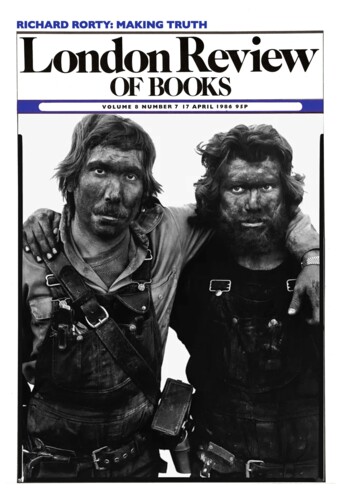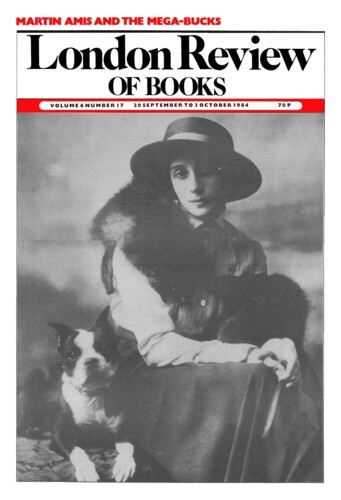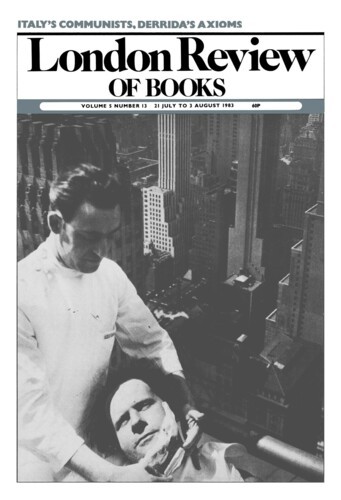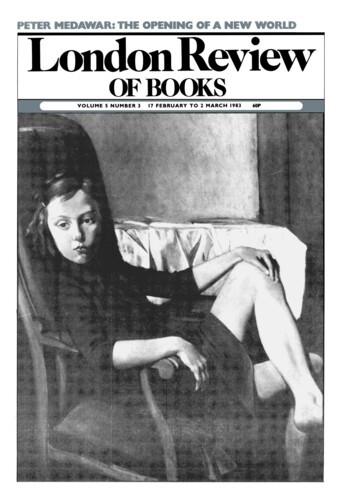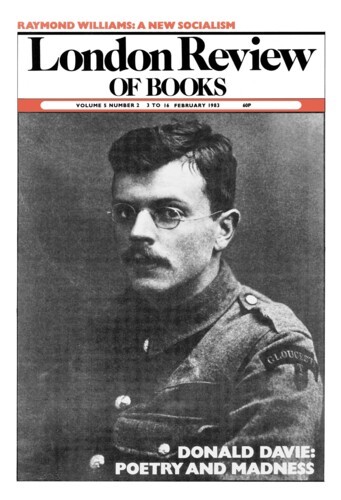John Murray
John Murray read physiology, Avestan and Sanskrit at Oxford. Since then he has worked in factories, and as a postman and labourer, as well as teaching for the WEA. He lives in Cumbria.
Story: ‘Natural Learning’
John Murray, 20 September 1984
Logan stood outside the shop which looked like an English funeral parlour, black-painted and all its contents invisible. On the window was inscribed in English in impressive calligraphy LEGAL OPIUM AND GANJA SHOP FOR HOLY MEN. It lay along one of those relatively deserted back streets of central Calcutta, the only wayfarers being the trams and the cadaverous dogs who roamed like wolves in their desperate packs.
Unfair to Young Writers
21 July 1983
Story: ‘The Señor and the Celtic Cross’
John Murray, 17 February 1983
One summer in the Scottish Hebrides young and mysterious Mr Stone meets up with middle-aged, forceful occultist Mr Dukes. Mr Dukes is sexually attracted to Mr Stone but Mr Stone is attracted more by flighty, playful barmaid Kate. Dukes reacts by subjecting Stone to aggressive Tarotist analysis. Stone is mortified and flees from Muile (Mull) to I (Iona). Now read on.
Story: ‘The Señor and the Celtic Cross’
John Murray, 3 February 1983
One way of describing his frightening progress would be to say that he moved from a big island to a smaller island to a tiny one. Then when he reached the tiny one he went to its furthest end and stood on a rock five feet out in the bright green Atlantic sea. Thus he was at a fourth stage of remoteness and felt almost securely positioned as a result.
Pieces about John Murray in the LRB
Yak Sandwiches
Christopher Burns, 31 March 1988
John Murray’s fiction has always seemed to arise directly from the circumstances of his own life. At first, his work concentrated on his childhood and adolescence among the tiny, depressed...
Carrying on with a foreign woman
John Sutherland, 7 November 1985
Kurt Vonnegut’s new novel finds him on old ground. All his hallmarks are prominently here: the cute narrative manner belying an apocalyptic message (the end of the world is once again...
Read anywhere with the London Review of Books app, available now from the App Store for Apple devices, Google Play for Android devices and Amazon for your Kindle Fire.
Sign up to our newsletter
For highlights from the latest issue, our archive and the blog, as well as news, events and exclusive promotions.
